As man-made development creeps further into our wild areas it becomes even more important to protect nature and wildlife from man’s encroachment before it’s too late. Coastal ecosystems are important to maintaining the life cycle of the planet but are also extremely valuable for fishing and eco-tourism. The good news is that it’s possible to enjoy a refreshing and relaxing vacation while still honoring and protecting the environment.
North Carolina’s Outer Banks barrier islands contain over 300 square miles (777 sq. kilometers) of uninhabited nature preservation areas set aside for the conservation, management and (in some cases) the restoration of specific designated fish, wildlife, plants and their habitats. In Dare County alone you’ll find two national wildlife refuges, the first national seashore in America, an ecological preserve, and a wonderfully unique state park. These areas offer extraordinary access to wild and unspoiled spaces where you can observe, explore, learn, and participate in nature preservation. Protected lands benefit us today and preserve these areas for future generations.
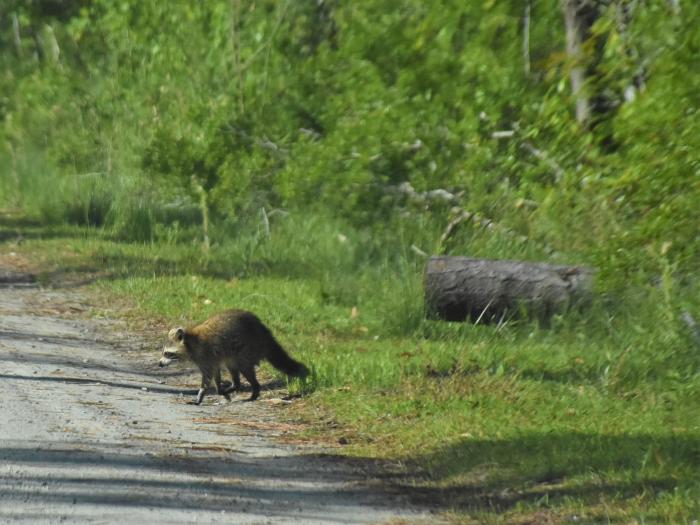
Alligator River National Wildlife Refuge
This large preserve covers 237 square miles (615 sq km) and is one of the more exceptional settings for wildlife viewing in the Outer Banks and the country.
This natural area is home to a program to reintroduce the endangered Red Wolf into the wild. It’s also the northernmost habitat for the American Alligator. You may be surprised to find that the highest concentration of Black Bears in the country and the largest of that species are in the refuge.
The best place to start is the Coastal NC National Wildlife Refuges Gateway Visitor Center [100 Conservation Way, Manteo, NC 27954]. This Visitor Center represents eleven national wildlife refuges and one national fish hatchery in Eastern North Carolina. You’ll find interactive exhibits, audio-visual programs, and even virtual airplane rides and field trips to the different sites.
On your own activities include hiking the nature trails, kayaking or canoeing on Milltail Creek paddling trails, geocaching, strolling the pristine beaches, and honing your nature photography skills. Drive the Murphy Peterson Wildlife Drive to look for black bear, alligators, white-tail deer, turtles, raccoons, and a plethora of birds and reptiles from the safety of your vehicle.
Guided tours and scheduled programs are generally available from May to October. Look for guided canoe, van, open-air tram tours and more.
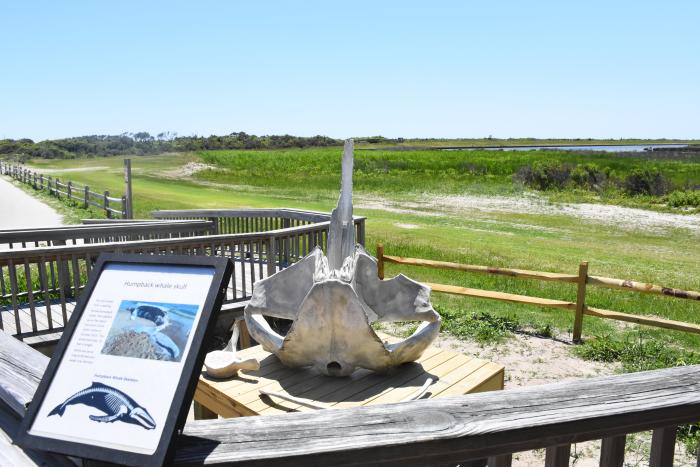
Pea Island National Wildlife Refuge
Across the Sound from Alligator River is Pea Island NWR. Covering 9+ square miles (24 sq km), this ribbon of island provides unspoiled habitat for more than 365 species of migratory birds that use OBX as a stopover on their way further south or as their winter home. This is one of North Carolina’s most popular birding destinations and one of the state’s premier sites for rare or unusual sightings of shorebirds, waterfowl, raptors and many others.
Loggerhead turtles are some of the most intriguing visitors to the Outer Banks and North Carolina coast. Occasionally you’ll see other sea turtles like the Leatherbacks, Green Sea turtles, or Kemp’s Ridley turtles coming on the beach to lay eggs. The eggs incubate under the warm sand for 60 to 100 days, then the tiny turtles hatch and instinctively head for the water.
Wildlife viewing is popular from the Pea Island Visitor Center (14500 NC Highway 12, Rodanthe, NC 27968) and along the two wildlife trails on the refuge. Fishing is also allowed in the ocean and sound at Pea Island. Camping, hiking, swimming, nature observation, photography, fishing and stargazing are just a few of the activities you can enjoy in this refuge.

Cape Hatteras National Seashore
The 44 square miles (115 sq km) of America’s first designated National Seashore is also famous as the nesting grounds for sea turtles. White-tail deer, harbor seals and a myriad of birds of all shapes and sizes inhabit the protected lands as well. A variety of reptiles make appearances at Cape Hatteras – including lizards, snakes, alligators and land turtles.
If you’re a fan of lighthouses, be sure to visit Cape Hatteras Light Station – the tallest brick lighthouse in the U.S. and possibly the world boasts the distinctive black and white spiral pattern on its exterior. You’ll recognize Bodie Island Light Station by its black and white horizontal stripes. Look for it just north of Pea Island NWR.

Fort Raleigh National Historic Site - 1401 National Park Dr, Manteo, NC 27954
Fort Raleigh offers a different kind of protected land, set aside by the National Park Service primarily for its historical significance. The Lindsay Warren Visitor Center presents exhibits about the indigenous people who first inhabited Roanoke Island, as well as the first English settlers to the New World in 1585. If you visit Fort Raleigh in the summer, consider attending the outdoor performance at the Waterside Theatre to learn the story of the “Lost Colony”.
African Americans also play a key role in the history of the island as a stopover for enslaved people fleeing slavery through the Underground Railroad. Black Americans also found safe haven from punishment, enslavement, and death during the Civil War, as well as education and training at the Freedmen’s Colony after the war.
You can find several trails on site to learn about how nature intersected with humans throughout its history.
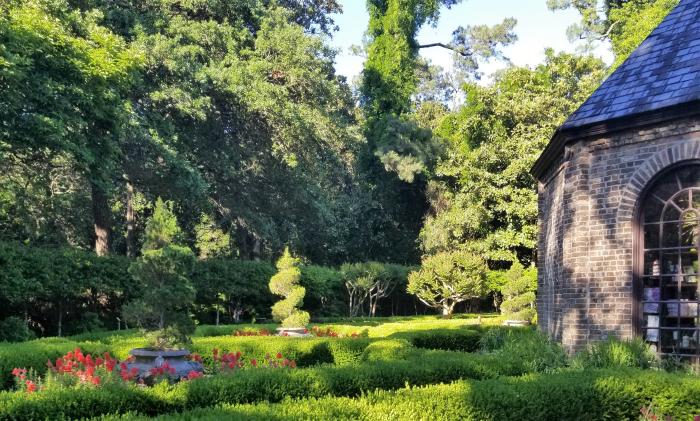
Elizabethan Gardens - 1411 National Park Drive, Manteo, NC 27954
Within the boundaries of Fort Raleigh National Historic Site grows 10 acres (4 hectare) of exquisite botanical gardens. Just as the untouched natural preserves provide a breath of fresh air from the busyness of life, so do the colors, shapes, and scents of flowers like camellias, hydrangeas, roses and tulips in this wonderfully cultivated green space along the water. It was originally envisioned to be a garden that represented what the early English settlers may have planted but evolved into a tapestry of formal English gardens and more informal natural-looking spaces.
As you wander through the various zones be sure to look for the lovely statuary, take in the sweet aroma of the “Fragrance Walk” and rest in the shade of the “Ancient Live Oak” trees, some believed to have been alive in 1585 when the English colonists first arrived on the island.
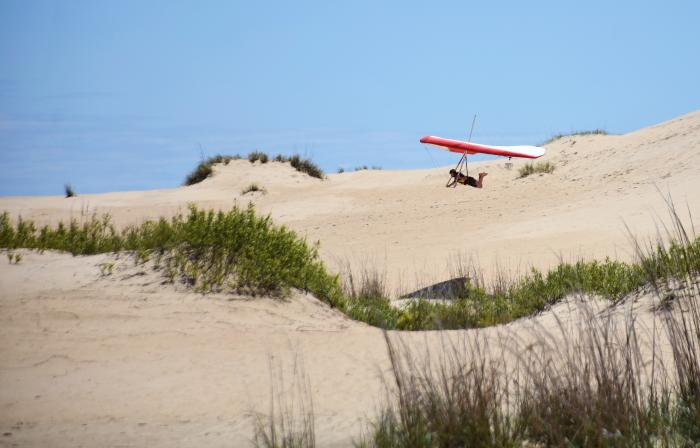
Jockey's Ridge State Park – 300 W. Carolista Drive, Nags Head, NC 27959
This unique state park is 420 acres (1.7 sq km) of sun, sand, wind and waves and contains the tallest and largest natural sand dune system in the Eastern United states. If you like to play in the sand the boardwalk will lead you to an observation deck where you can view the taller dunes. From there you can have fun hiking the nature trails, sledding on the dunes, flying kites and watching the hang gliders. Be sure to bring lunch to enjoy at one of the shady picnic areas.
*Note: the park recently announced that the Visitor Center will be closed from May 24, 2021, to April 2022 for renovations. The park and restrooms are still open and Ranger-led programs will continue.
Do you have limited mobility? Park visitors with disabilities who need assistance getting over the sand can reserve a time to ride an all-terrain vehicle with staff who will drive them from the Visitor Center up on the tallest dunes. Besides the adventure of the ride, you’ll see unforgettable views of the Atlantic Ocean and the Roanoke Sound once you’re at the top.
Hang gliders with proper certification can register with the park office to take their turn gliding from the dunes. If you’d like to learn to hang glide, this is the place. Kitty Hawk Kites offers dune hang gliding lessons all year on site at the park.
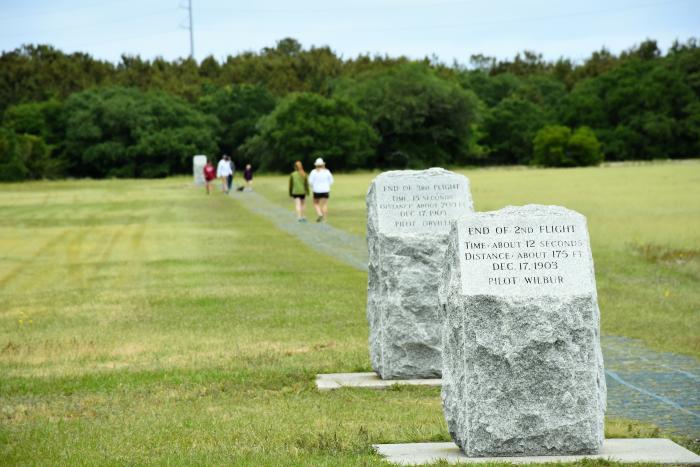
Wright Brothers National Memorial - 1000 N Croatan Hwy, Kill Devil Hills, NC 27948
Speaking of winds, the Wright Brothers National Memorial gained fame in part because of its winds. This Outer Banks site marks the spot where Ohio brothers, Orville and Wilbur Wright made history by completing the first successful powered airplane flights on December 17, 1903. They chose this location because of its consistent winds and forgiving sandy landing area.
This protected historical site teaches us how two self-taught engineers were able to change the world through trial and error, innovation, persistence, determination and teamwork.
While swimming and lounging on the beach might be the first thing that comes to mind when you think of the Outer Banks, exploring these magnificent, protected lands warrants a bit of your time too. What better way to invest in learning about our planet and teaching your children the significance of preserving and protecting wildlife and the natural world around us?

